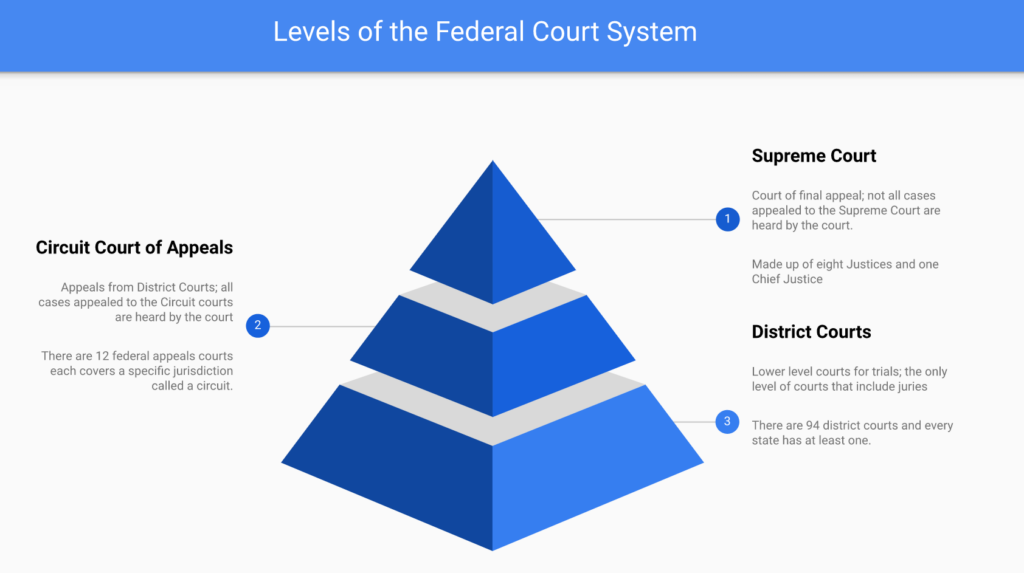Federal Judicial System
The judicial branch’s role is to interpret the laws, ensure that the laws are fairly enforced, and provide a means for resolving disputes between private parties or determining the guilt or innocence of individuals accused of crimes. The federal court system, created by Article III of the U.S. Constitution, includes the Supreme Court, Circuit Courts of Appeals, and district courts. The district courts are the lowest level of the federal court system. They are responsible for hearing both criminal and civil cases, while the Circuit Courts of Appeals review decisions made by the district courts. The Supreme Court is the highest level of courts in the U.S. and has the final say on constitutional matters and appeals from lower courts. The dual court system also exists in the U.S., with each state having its own court system that works alongside the federal courts.

After the Supreme Court was established by the U.S. Constitution, Congress went on to create the two additional levels of federal courts you mentioned:
- District Courts: There are 94 district courts in the United States, each serving a specific geographical area or district. These courts are the first level of federal courts and hear both criminal and civil cases. They are the only federal courts that have witnesses and juries.
- Circuit Courts of Appeals: There are 13 circuit courts of appeals, which hear appeals from district courts in their respective geographic regions. These courts do not have witnesses or juries; three judges review the case and vote on how to rule. They can either uphold the decision, reverse it, or remand the case to the lower court for further action.

These three levels of federal courts comprise the federal court system, which operates alongside the state court systems to form the dual court system in the United States.
The district courts are the lowest level of the federal court system and have jurisdiction over criminal and civil cases. Each state has at least one district court, and there are a total of 94 district courts throughout the United States. The district courts are unique in that they are the only federal courts with witnesses and juries, which means they are the only federal courts where trials occur. Each district court also has its own seal, which is used to authenticate court documents and other official materials.
The Court of Appeals is an intermediate level of the federal court system that reviews decisions made by the district courts. There are 12 circuit courts, each with its own jurisdiction over a specific geographic region of the country, and a 13th Court of Appeals for the Federal Circuit that handles special cases nationwide. Unlike district courts, the Court of Appeals does not have witnesses or juries; three judges review the case and vote on how to rule. They can either uphold the decision made by the lower court, reverse it, or remand the case back to the district court to be heard again.

